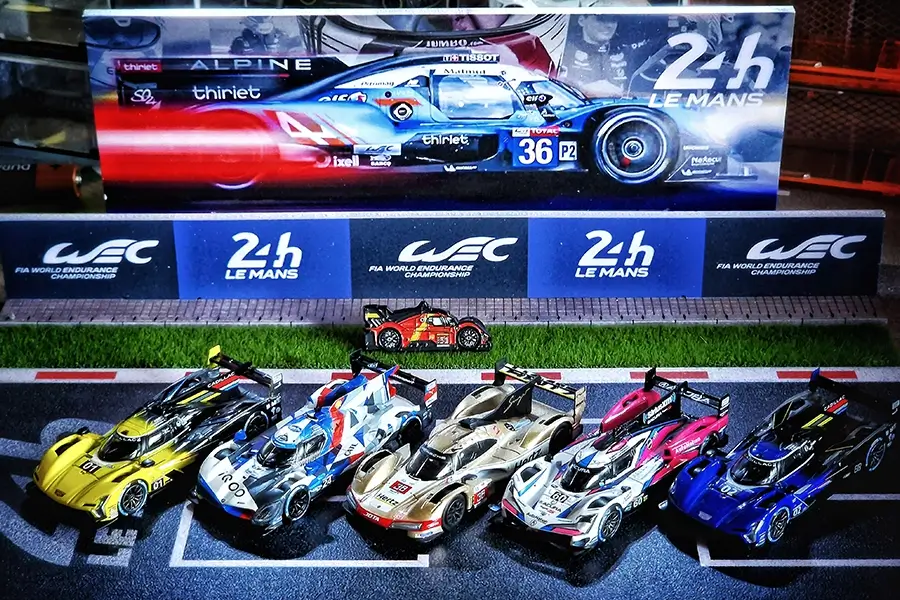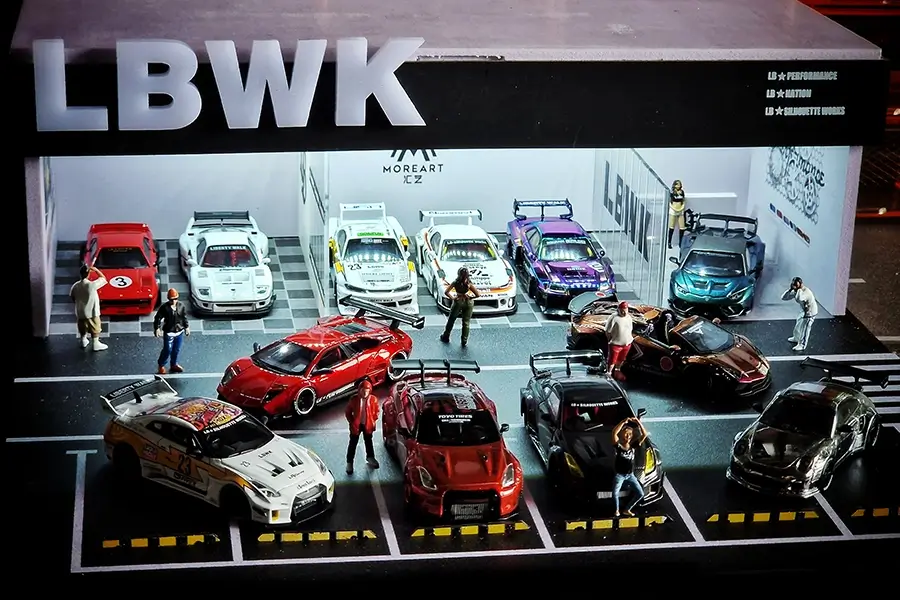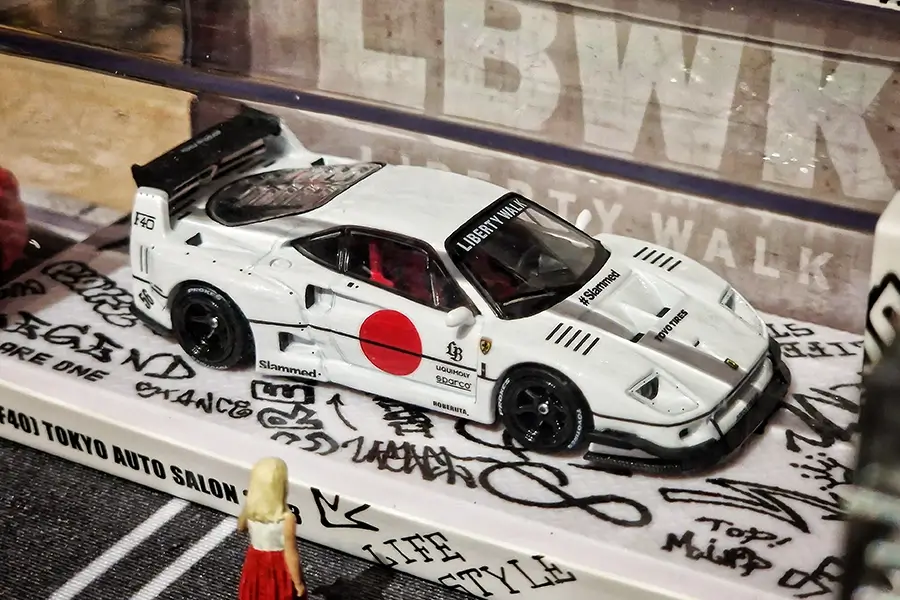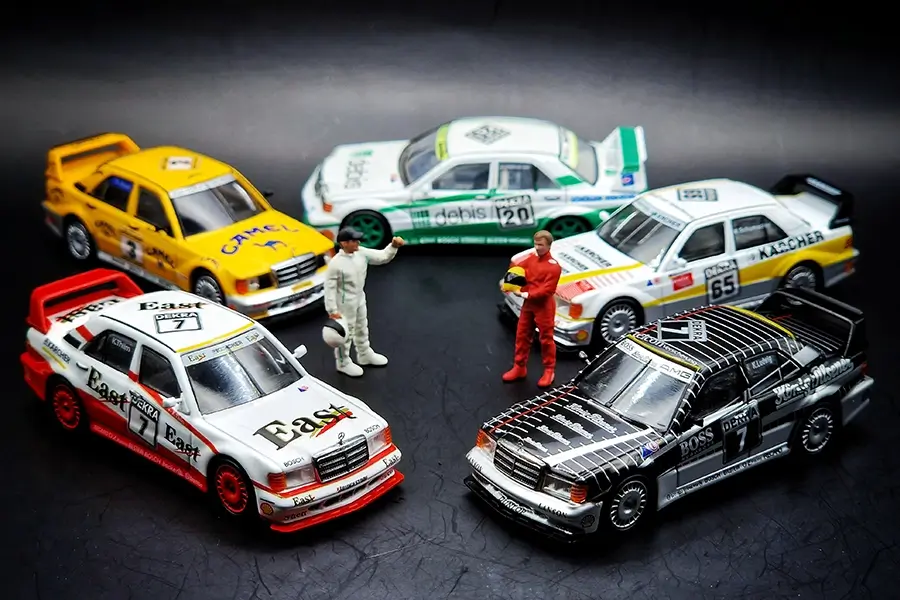MiniGT
-
WEC Hypercar Series 2023 / 2024 FEATURETTE
Battle of the brands! Alpine, BMW, Cadillac, Ferrari, Lamborghini, Porsche, Peugeot, Toyota, Vanwall and more: The World Endurance Championship (WEC) has become insanely competitive than in the Hypercar top class in 2024. With ten manufacturers in there, a boom was highely expected, with which the WEC and the 24 Hours of Le Mans have finally celebrated the new golden age of prototype racing. (Aston Martin has also announced its intention to compete for victories in the Hypercar class as soon as possible). The Hypercar class is so successful that the LMP2 category will have to make way for it in 2024. It will only compete at Le Mans. MoreArt offers…
-
Libertywalk’s craziest builds FEATURETTE
Liberty Walk: the people who take “widebody” to a whole new level. Their body kits are like the hot sauce packets of the car world – love them or hate them, they definitely add some flavour. Liberty Walk was founded by Wataru Kato at the age of 26. The business was initially run on a small car park where only a few cars could be displayed. Over the course of its history, Liberty Walk has become one of the biggest names in car tuning through excellent marketing and a passion for work. This has also spread to the world of model cars, with numerous manufacturers such as Inno64, MiniGT and…
-
In Memory of MARCELLO GANDINI – FEATURETTE
Design language for eternity! Marcello Gandini designed the Lamborghini Miura and Countach, but also everyday cars for BMW, Citroen and Renault. He now died in Rivoli at the age of 85. If his father had had his way, Marcello Gandini would have become a pianist. But he invested the money he had received for a Latin book in a book on cars and engineering. Fortunately, Gandini rebelled against family tradition and took a different path to his father, who was a well-known conductor. The automotive world would be poorer for some of the most spectacular cars. Lamborghini Miura and Countach In 1965, Marcello Gandini joined Bertone, succeeding Giorgio Giugiaro (legendary…
-
THE WORLD of WATARU KATO – LIBERTYWALK FEATURETTE
More than just a brand, its a lifestyle… Recently, you often come across the terms “Rocket Bunny”, “Rauh-Welt” or “Liberty Walk”. The terms “Rocket Bunny”, “Rauh-Welt” or “Liberty Walk” simply refer to manufacturers of Japanese body kits, don’t they? Their characteristic style is currently a trend, especially overseas, and involves extreme wide bodies. So-called “bolt-on overfenders” are used here. This roughly translates as “riveted-on mudguard attachments”. However, they are now so much more than ordinary handicrafts designed to last a few years. Rocket Bunny, Rauh-Welt or Liberty Walk have all made a name for themselves in the car scene, even far beyond! Whether positive or negative is up to you!…
-
The RISE AND FALL of the DTM – MiniGT, Tarmacworks, Hot Wheels FEATURETTE
How it all began The DTM was already known as the DRM, the German Racing Championship, in 1972 and enjoyed enormous popularity. Originally, production-based Group 2 touring cars competed in the racing series before the FIA adapted the regulations in 1982 and paved the way for Group C sports cars. The BMW 3.5 CSL and the M1, which was used in the Pro Car Series as well as in rallying, were famous names at the time, especially from BMW’s point of view. Hot Wheels provided us with numerous colour variants of the 3.0 CSL from 1973 and the M1 Pro Car. This concept of the DRM was associated with enormous…





